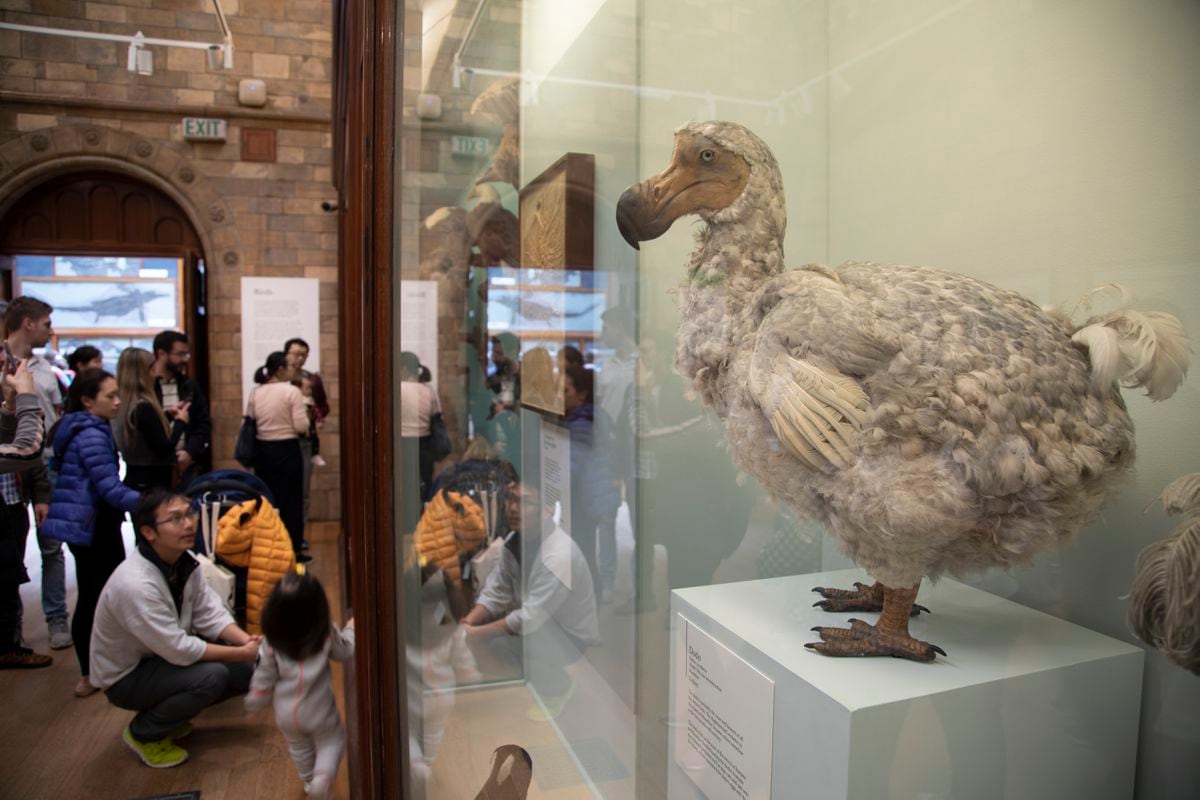
Since humans began to spread across the world, they have caused the extinction of more than 1,400 species of birds. The new figure — published on Tuesday in the journal Nature Communications — is double previous estimates. The equivalent of 12% of all bird species that exist today have disappeared. The research reveals the true scale of both the magnitude of these human-driven extinction waves (due to deforestation, mass hunting and the introduction of invasive species) and their implications for biodiversity.
Since most known bird extinctions have occurred on islands, researchers took advantage of the fossil record to estimate how many species went extinct on Fiji, Hawaii, New Zealand, and other Western Pacific islands. Thus, they calculated that 1,430 species of birds around the world have disappeared since the Late Pleistocene (beginning 126,000 years ago), with most of these extinctions occurring in the last 11,700 years.
Some 55% of these extinctions had not been discovered until now. Previous data had focused on well-documented extinctions, dating back just over 500 years. The research team — made up of scientists from the University of Gothenburg (Sweden), the Center for Research in Forest Ecology and Applications in Spain and other universities in Germany, the United Kingdom and Norway — believed this approach underestimated the scale of the extinctions. Since bird remains are more difficult to preserve and knowledge is very uneven in different parts of the world, some species may have become extinct before being recorded. For this reason, the researchers incorporated statistical models to extrapolate the figure with existing data on fossil remains. Ferran Sayol, doctor in Terrestrial Ecology at the Autonomous University of Barcelona and co-author of the study, explains that humans have driven more than one in nine bird species to extinction, and that this has led to severe ecological and evolutionary consequences that are potentially irreversible.
Birds perform different functions such as seed dispersal by toucans, pollination by hummingbirds, or recycling nutrients from carrion by vultures. The disappearance of a bird species impacts each ecosystem differently, but “by losing their roles or functions, they cause cascading effects, for example, a plant can no longer spread its seeds or pollinate itself; and, therefore, it also becomes extinct,” explains Sayol.
Three major mass extinctions
The research brings to light some of the biggest human-driven extinction waves in history. Sayol and his colleagues found that the most intense extinction wave took place during the 14th century, and was linked to the first arrival of people to islands across the Eastern Pacific (including the Hawaiian Islands). According to the new study, extinction rates in this period were 80 times higher than previously thought. Another extinction wave occurred in the 9th century B.C., driven by the arrival of people in the Western Pacific. Researchers estimate that the Pacific account for 61% of total bird extinctions; including iconic species such as the high-billed crow and Sinoto’s lorikeet.
The study also highlights the extinction wave that has been happening since the mid-18th century. Since then, in addition to increased deforestation and the spread of invasive species, birds have had to face additional human-driven threats such as climate change, intensive agriculture and pollution. This wave is expected to be the biggest, as up to 700 bird species could disappear in the next hundreds of years.
Suyol explains that current rates of extinction are 80 times faster than the natural rate of extinction. While this wave is still smaller than past ones, it is happening at a much faster rate, he says. “What would normally happen in millions of years is happening in a few hundred. If we continue at the current pace, we could reach that level,” he says.
Ramón Martí, director of institutional development of the Spanish Society of Ornithology, who was not involved in the study, says that the new figures “reflect the severity of human’s footprint on nature.”
The authors stress the need to intensify conservation efforts to avoid further losses in biodiversity, as the findings underscore the critical situation of birds globally and that humans have a responsibility to preserve diversity. Sayol hopes that by looking at the past and better understanding how many species have disappeared because of humans, “efforts will be made to save those that are still here.”
Sign up for our weekly newsletter to get more English-language news coverage from EL PAÍS USA Edition
"bird" - Google News
December 21, 2023 at 01:01AM
https://ift.tt/eN6ACHO
Humans have driven more than 1400 bird species to extinction, double what was previously thought - EL PAÍS USA
"bird" - Google News
https://ift.tt/oj6xzVS
https://ift.tt/nlzTuUs
Bagikan Berita Ini














0 Response to "Humans have driven more than 1400 bird species to extinction, double what was previously thought - EL PAÍS USA"
Post a Comment